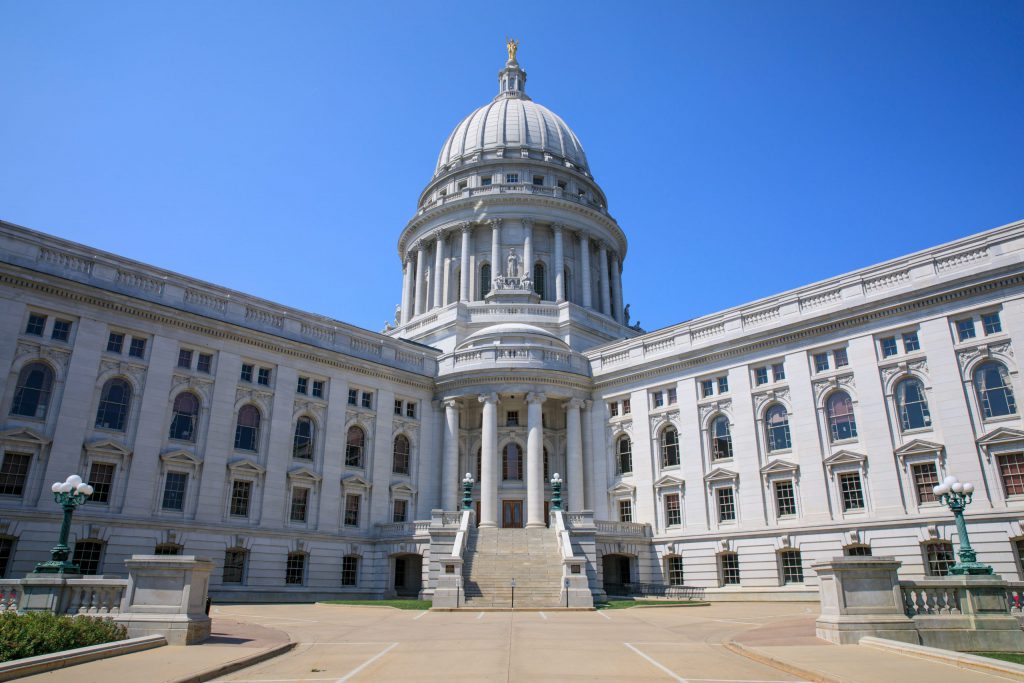How can advocates continue to advance change in the face of a divided, politicized state government? It’s a key question for environmental policy advocates in Wisconsin as we take on the urgent climate crisis. But you need only look to the Milwaukee area to see that change is not only possible, it’s happening. Over the last four years, Clean Wisconsin has partnered with state and local leaders to create a promising new strategy that combines local lawmaking with state oversight to achieve lasting regional impact.
In 2017, our Milwaukee team began working with the Milwaukee Metropolitan Sewerage District (MMSD) to encourage municipalities to embrace green infrastructure practices, like building bioswales around parking lots and streets to capture polluted storm runoff, using permeable pavers in parking areas, and installing rain gardens, cisterns, rain barrels and green roofs. But getting the dozens of towns and cities across MMSD’s service area to implement green infrastructure was a tall order—it meant changing local codes and ordinances.
Our Milwaukee Program Director, Pamela Ritger de la Rosa, and Water Resources Specialist, Ezra Meyer, began meeting with staff from local municipalities to talk about the importance of green infrastructure to help mitigate flooding and reduce water pollution to local waterways. Staff from local municipalities were receptive, but progress on adopting code and ordinance changes was slow. As discussions continued, Pam and Ezra learned about the challenges municipalities were facing in meeting new Total Maximum Daily Load (TMDL) water pollutant limits required by the federal Clean Water Act. Listening carefully to their concerns and constraints, they realized municipalities needed smart, cost-effective options to make progress on new TMDL goals, as well as more motivation to implement code and ordinance changes that would support green infrastructure in their communities.
Around this same time, these municipalities were coming up on the expiration of their Municipal Separate Storm Sewer System (MS4) permits to limit stormwater pollution. Their next MS4 permits from the Wisconsin Department of Natural Resources (DNR) would need to include tangible, measurable actions to advance their progress towards reducing stormwater pollution, as required by the new TMDL limits.
Clean Wisconsin seized the opportunity. Pam convened meetings with DNR staff and municipal stormwater engineers and showed them how green infrastructure could go a long way towards capturing many pollutants that would otherwise flow into storm sewers and local waterways. Pam convinced DNR staff to treat the adoption and enforcement of recommended changes to local laws as an important step towards reducing pollutant loads for the MS4 permit. More green infrastructure equals less stormwater-runoff pollution!
Pam then went back to the local government leaders she started with—sharing the new DNR policy along with information about other potential benefits . Over the next six months, Clean Wisconsin and Southeastern Wisconsin Watersheds Trust (“Sweet Water”) drafted comprehensive memoranda to ten municipalities carefully explaining these benefits.
The following year DNR took the next logical step and began requiring the ten municipalities within the Menomonee River Watershed-Based MS4 Permit group to enable green-infrastructure provisions in their codes and ordinances in order to comply with their permit. More recently, DNR required another bundle of towns—the North Shore MS4 Permit group—to do the same, bringing the total number of municipalities to 17.
Clean Wisconsin is proud to have innovated this new approach to regional policymaking. In the years to come, Pam, Ezra and other water experts will work to expand these critical protections to scores of new local governments.

